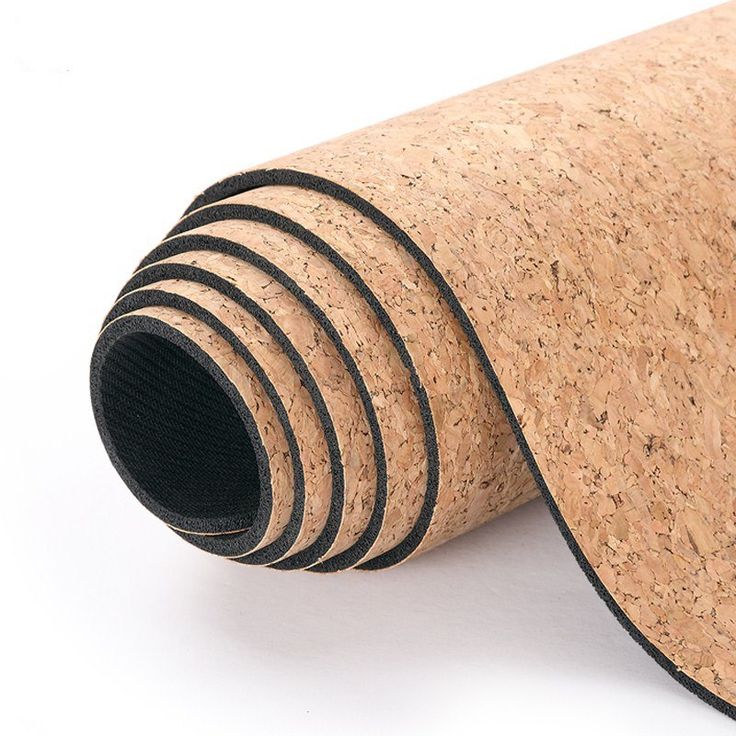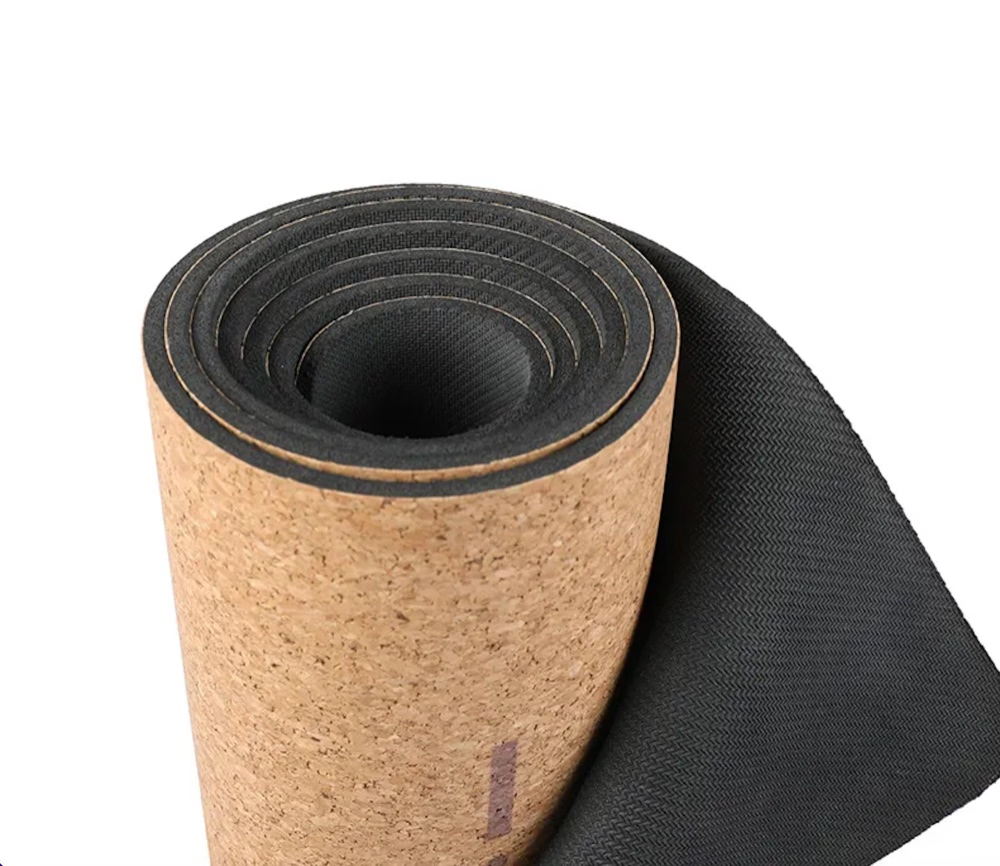TPE/Cork Yoga Mats: The Ultimate Product & Sourcing Guide for 2025

9/9/2025 · 7 min read · Sourcing
TPE/Cork Yoga Mats: The Complete Buyer’s & Sourcing Guide (2025)

What is a TPE/Cork Yoga Mat?
A TPE/cork yoga mat combines two layers:
- Top layer: Natural cork – warm touch, naturally antimicrobial, and gets grippier when you sweat (great for hot yoga).
- Base layer: TPE (Thermoplastic Elastomer) – lightweight, cushioned, odor-light, and typically free of PVC, latex, and heavy metals.
This hybrid solves a classic trade-off: cork’s reliable wet grip + TPE’s comfort/portability.
.webp)
Key Specs to Know
- Thickness: 4–6 mm (sweet spot for joint comfort & balance). Heavier-duty mats go 6–8 mm.
- Dimensions: 173–183 cm length × 61–66 cm width (long/tall versions: up to 200 × 68 cm).
- Weight: ~700 g – 1.2 kg (lighter than cork–rubber mats).
- Density/Cushioning: Medium-soft on the TPE side; stable cork top prevents “sinking”.
- Surface Finish: Smooth or micro-texture; laser alignment lines optional.
- Edge & Bonding: Heat-pressed lamination (no glue) is preferred for longevity.
- Packaging: Kraft sleeve or tube; include care card and strap.
Pros & Cons
Pros
- Excellent sweat grip (cork improves with moisture)
- Lightweight & travel-friendly
- Low odor out of box
- Eye-catching, “natural” aesthetic
- Custom printing/laser engraving possible
Cons
- Cork can scuff if folded or aggressively scraped
- Prolonged sun/heat may dry cork faster—store rolled & shaded
- Not as dense as natural rubber for ultra-joint cushioning needs
Care & Longevity
- Clean with a damp cloth + mild soap; avoid harsh chemicals.
- Air-dry fully before rolling.
- Roll cork side out, don’t crease.
- Expect 12–24 months of active studio use (longer for light home use) with proper care.
Who Buys TPE/Cork Mats (and Why)
- Hot yoga & power yoga users: cork’s wet traction is a game-changer.
- Eco-conscious customers: cork’s renewable bark harvest + PVC-free TPE positions well.
- Studios & gyms: private-label runs with alignment lines & logo.
- DTC brands & retailers: premium look/feel at midweight shipping costs vs rubber.
Compliance, Certifications & Lab Tests (What to Ask Suppliers)
- Material safety: REACH, RoHS, CA Prop 65 (where relevant), phthalate-free declaration.
- Factory standards: ISO 9001 (quality), BSCI/SEDEX/Amfori (social), ISO 14001 (environment).
- Cork sourcing: FSC® availability (nice differentiator for eco-positioning).
- Odor/chemicals: VOC test reports; heavy metal & azo dye tests for inks/prints.
- Finish: Non-toxic inks for logos/graphics; abrasion and colorfastness tests.
Cost Structure & Target Margins (Typical Ranges)
(Indicative; varies by thickness, print, strap, MOQ, and shipping mode.)
-
Ex-Factory (4–6 mm, custom logo): US$4.50 – $9.00
-
Sea Freight + Duty/Landed (per unit, 1×20’ mixed goods): +US$0.60 – $1.80
-
Retail (direct DTC): US$29 – $69 (premium designs: $79+)
-
Wholesale (to studios/shops): US$14 – $28
-
Healthy Gross Margin Targets:
- DTC: 65–75%
- B2B/Wholesale: 35–55%
Private-Label Options to Consider
- Branding: laser-engraved logo on cork, or single-color print (water-based inks).
- Alignment lines: laser or printed guides (marketed for “form & posture”).
- Bundles: strap, cork block, cork wheel, mat cleaner (upsell AOV).
- Colorways: natural cork on top; choose TPE base colors to match brand palette.
- Packaging: plastic-free kraft tube/sleeve + QR code care guide.
Where to Source TPE/Cork Mats
1) China (Primary, Scalable, Custom-Friendly)
- Why: Largest capacity, mature lamination tech, fast lead times, competitive pricing, extensive private-label experience.
- Hubs: Fujian, Guangdong, Hebei, and Zhejiang provinces.
- Best for: Startups to large DTC/wholesale brands that need customization, reliable QC, and mixed container loads.
2) Vietnam
- Why: Improving sporting-goods capacity, trade benefits with some destinations, potentially smoother logistics for certain routes.
- Best for: Mid-volume buyers seeking China-plus diversification.
3) India
- Why: Strong textile ecosystem; growing yoga goods manufacturing base; advantageous for SAARC/Middle East logistics.
- Best for: Regional brands serving South Asia/Middle East; small–mid MOQs with flexible finishing.
4) Portugal (Cork Origin & Premium Finishing)
- Why: Cork homeland; some niche makers can assemble cork mats with imported bases.
- Best for: High-end “made in EU” positioning; boutique volumes.
Tip: Cork top sheets are often sourced from Portugal/Spain; many Asian factories laminate Portuguese cork to TPE in-house. Asking specifically for Portuguese cork (and FSC availability) is a great eco-story.
Supplier Shortlist Patterns (What “Good” Looks Like)
When you vet factories, look for:
- Years of experience making cork + TPE (ask for factory photos & 3rd-party audits).
- Heat-press lamination capability; show peel tests and bonding reports.
- REACH/ROHS/Prop65 documents and recent lab reports in your product’s exact spec (thickness, inks, etc.).
- Willingness to ship pre-production samples with your branding.
- Clear QC checkpoints (incoming cork inspection, bonding strength test, odor/VOC check, final AQL).
MOQ, Lead Times & Logistics
-
MOQ: 100–500 pcs for standard prints; 500–1,000 for full custom colorways or special packaging.
-
Sample time: 5–10 days (with logo); faster for blank samples.
-
Mass production: 15–30 days after sample approval (seasonal spikes pre-Q4).
-
Shipping:
- Air/Express for samples and urgency (costly per unit).
- Sea (LCL/FCL) for bulk; best landed cost.
-
HS Code (typical): 4016.91 (rubber/gym mats) or 9506.91/9506.99 (sporting goods), but confirm with your customs broker based on material declaration in your country.
Step-by-Step Sourcing Workflow
-
Define Your Spec
- Size, thickness (e.g., 183 × 66 × 6 mm), TPE density, cork grade, edge finish.
- Branding: laser logo + alignment lines; strap included; plastic-free packaging.
-
Shortlist 5–8 Factories
- Prioritize those with cork-TPE experience, documented tests, and strong private-label portfolios.
-
Request Quotes & Samples
- Send a one-pager: specs, target MOQ (e.g., 300–500), packaging, destination port.
- Ask for: unit price, mold/setup (if any), sample cost/lead time, production lead time, EXW/FOB/CIF options.
-
Evaluate Samples
- Check bonding (try to separate layers), surface scuff resistance, odor, print quality, edge smoothness, flat lay (no curling), and wet-grip test.
-
Negotiate & Contract
- Lock Incoterms (FOB vs CIF), delivery window, AQL levels, defect/repair policy, spare units (2–3%).
- Confirm labeling, cartons, and barcodes.
-
Production & QC
- Approve golden sample.
- Mid-production spot check + final pre-shipment inspection by a third party (e.g., AQL 2.5/4.0).
-
Freight & Customs
- Book sea freight early (peak season); share packing list & invoices with your broker ahead of time.
- Prepare duty/tax estimates and landing cost sheet.
-
Post-Arrival QA & Launch
- Re-inspect random cartons, stress-test a few mats, photograph, and finalize retail content (care guide, benefits, eco claims).
Pricing Request Template (Copy/Paste)
Subject: RFQ – TPE/Cork Yoga Mat (Private Label)
Hello [Name], We’re sourcing TPE/Cork yoga mats with private labeling.
Spec preview
- Size: 183 × 66 × 6 mm
- Top: Portuguese cork (FSC preferred), laser alignment lines + logo
- Base: TPE, [color code], heat-pressed lamination
- Accessories: cotton carry strap, kraft sleeve (plastic-free)
- Testing: REACH/ROHS/Prop65 as applicable
- Qty: Samples now; initial order 500 pcs
Please quote EXW & FOB: unit price, sample cost/lead time, production lead time, MOQ, packing details, and available certifications. Kindly share recent lab reports and bonding/peel test results for similar specs.
Thank you, [Your Name / Company] [Destination city/port]
Positioning & Marketing Angles
- “Sweat-Grip Cork” – gets tackier as you heat up.
- “Calm on the Joints, Light in Your Bag” – TPE comfort without rubber weight.
- “Plastic-Free Packaging + Natural Aesthetics” – highlight sustainability story.
- “Laser Alignment Lines” – for better posture and consistency.
Quick FAQ
Q: Will the cork flake? High-quality cork with proper bonding should not flake under normal use. Avoid folding and strong scraping.
Q: Is TPE recyclable? Often, yes (varies by local facilities). Emphasize PVC-free and low-odor benefits.
Q: Studio grade or home grade? 6 mm with reinforced lamination and tighter QC is better for high-traffic studio use.
TL;DR (Your Buying Checklist)
- Pick 183 × 66 × 6 mm, laser lines, Portuguese cork, heat-pressed bonding.
- Ask for REACH/ROHS, FSC option, VOC & heavy metal tests.
- Vet 5–8 factories; approve a golden sample.
- Lock Incoterms, AQL levels, and inspection plan.
- Ship by sea for best landed cost; launch with a plastic-free story.